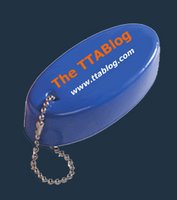TTAB Finds SOLAR CONCIERGE Merely Descriptive of, and Lacking Acquired Distinctiveness for, ..... Guess What?
The USPTO rejected Dana Redden's application to register the proposed mark SOLAR CONCIERGE for "financial consultation in the field of financing of solar energy projects and financial consulting regarding solar energy." [SOLAR disclaimed]. The Board found the mark to be merely descriptive under Section 2(e)(1) and rejected Redden's Section 2(f) claim of acquired distinctiveness. In re Dana Redden, Serial No. 97299114 (July 24, 2024) [not precedential] (Opinion by Judge Michael B. Adlin).
The Board had no doubt that SOLAR CONCIERGE is merely descriptive because it "immediately conveys that as a 'concierge' in the solar energy field, Applicant provides assistance in connection with acquiring or managing a solar energy system, including related financial issues.
The evidence showed that some of Redden’s competitors use the term "solar concierge" in their marks or trade names. Those third-party uses are consistent with the dictionary definitions of the constituent words, and in combination each word retains its merely descriptive significance for the services.
Indeed, it is highly descriptive, as it conveys exactly what dictionary definitions predict it would convey – assisting others in obtaining and managing a solar energy system, including the financial aspects thereof. This is clear from the third-party service mark, trade name and descriptive uses discussed above, and from Applicant’s prior Supplemental Register registration, as well as her disclaimer of “SOLAR” and Section 2(f) claim in her original application.
Because the proposed mark is highly descriptive, Redden bore a "heavy burden" to prove acquired distinctiveness. Redden relied solely on her use of SOLAR CONCIERGE mark for 12 years. The Board found that she fell "far short" of establishing acquired distinctiveness for the proposed mark, "which is commonly used by third parties."
[D]espite Applicant’s use of the term over the years, there is no evidence that consumers or the media understand “solar concierge” as an identifier of Applicant’s services. There is merely evidence that Applicant has used and promoted her proposed mark, unaccompanied by evidence of how widespread the use is, how many consumers have been exposed to the proposed mark, or any indicia of recognition that the proposed mark identifies Applicant’s solar energy consultation services.
The Board concluded that the "plentiful evidence of third party service mark, trade name and descriptive use" of "solar concierge, and the lack of sales and advertising figures, unsolicited media attention, and quantification of consumer impact, was "fatal" to her Section 2(f) claim.
And so, the Board affirmed the refusal to register.
Read comments and post your comment here.
TTABlogger comment: Is this a WYHA?
Text Copyright John L. Welch 2024.














